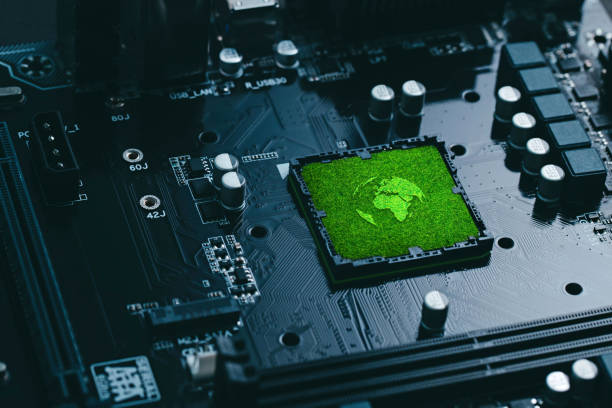Introduction
In recent years, the intersection of biology and circuitry has given birth to a groundbreaking field known as BioCircuitry. This innovative technology holds immense promise in revolutionizing healthcare by integrating biological systems with electronic components. In this comprehensive guide, we delve into the intricacies of BioCircuitry, its applications, benefits, and future prospects.

What is BioCircuitry?
BioCircuitry refers to the fusion of biological processes with electronic circuits to create innovative solutions for healthcare challenges. It involves the design and implementation of circuits that interact with biological systems, such as the nervous system, to diagnose, monitor, and treat various medical conditions.
Relevance and Importance
The significance of BioCircuitry lies in its potential to offer personalized and precise healthcare solutions. By leveraging the body’s own electrical signals and integrating them with electronic devices, BioCircuitry opens new avenues for targeted therapies and advanced diagnostics.
Types and Categories
Neural Interface Systems
Neural interface systems are a prominent application of BioCircuitry, enabling direct communication between electronic devices and the nervous system. These systems hold promise in restoring lost sensory or motor functions and treating neurological disorders.
Brain-Computer Interfaces (BCIs)
BCIs are a type of neural interface system that allows direct communication between the brain and external devices. They hold immense potential in assisting individuals with paralysis or neurological conditions to control prosthetic limbs or interact with computers using their thoughts.
Bioelectronic Medicine
Bioelectronic medicine involves the use of BioCircuitry to modulate electrical signals within the body to treat various diseases. By targeting specific neural pathways, bioelectronic devices can regulate organ function and alleviate symptoms of conditions such as chronic pain, inflammatory disorders, and metabolic diseases.
Vagus Nerve Stimulation (VNS)
VNS is a form of bioelectronic therapy that involves the implantation of a device to stimulate the vagus nerve. This therapy has shown promising results in treating epilepsy, depression, and migraines by modulating the body’s autonomic nervous system.
Symptoms and Signs
Understanding the symptoms and signs associated with BioCircuitry technologies is crucial for accurate diagnosis and treatment.
Neuropathic Pain
Neuropathic pain, characterized by shooting or burning sensations, is a common symptom addressed by BioCircuitry interventions. By targeting specific neural pathways involved in pain perception, bioelectronic devices can provide relief for individuals suffering from chronic pain conditions.
Motor Dysfunction
Motor dysfunction, resulting from neurological injuries or disorders, often manifests as impaired movement or coordination. Neural interface systems, such as BCIs, aim to restore motor function by bypassing damaged neural pathways and directly stimulating the muscles or prosthetic limbs.
Causes and Risk Factors
The development of BioCircuitry technologies is influenced by various factors, including biological, environmental, and technological advancements.
Biological Factors
Biological factors, such as the intricate neural networks within the body, play a significant role in shaping BioCircuitry research. Understanding the complex interactions between neurons and electronic components is essential for designing effective bioelectronic devices.
Environmental Factors
Environmental factors, including technological advancements and regulatory frameworks, impact the implementation and adoption of BioCircuitry technologies. Collaborations between researchers, clinicians, and regulatory agencies are crucial for ensuring the safe and ethical deployment of these innovations.

Diagnosis and Tests
Accurate diagnosis is essential for guiding BioCircuitry interventions and monitoring treatment outcomes.
Neuroimaging Techniques
Neuroimaging techniques, such as functional magnetic resonance imaging (fMRI) and electroencephalography (EEG), play a vital role in mapping neural activity and identifying potential targets for BioCircuitry interventions.
Electrodiagnostic Testing
Electrodiagnostic testing, including nerve conduction studies and electromyography (EMG), helps assess the function of the peripheral nervous system and identify abnormalities that may benefit from bioelectronic therapies.
Treatment Options
BioCircuitry offers a wide range of treatment options for various medical conditions, ranging from neurological disorders to chronic pain management.
Neuromodulation Therapies
Neuromodulation therapies, such as deep brain stimulation (DBS) and spinal cord stimulation (SCS), utilize BioCircuitry to modulate neural activity and alleviate symptoms of movement disorders, chronic pain, and psychiatric conditions.
Closed-Loop Systems
Closed-loop systems, also known as feedback-controlled devices, dynamically adjust stimulation parameters based on real-time physiological signals. These systems offer personalized and adaptive therapies for conditions such as epilepsy and Parkinson’s disease.
Preventive Measures
While BioCircuitry technologies primarily focus on treatment, preventive measures play a crucial role in promoting overall health and well-being.
Lifestyle Modifications
Adopting a healthy lifestyle, including regular exercise, balanced nutrition, and stress management, can help reduce the risk of developing conditions that may require BioCircuitry interventions.
Early Intervention
Early detection and intervention can prevent the progression of certain medical conditions and minimize the need for invasive treatments. Regular screenings and proactive healthcare management are essential for maintaining optimal health.
Personal Stories or Case Studies
Real-life stories and case studies offer insights into the practical applications and impact of BioCircuitry technologies on individuals’ lives.
Patient Perspectives
Listening to the experiences of patients who have undergone BioCircuitry interventions provides valuable insights into the efficacy and challenges associated with these therapies.
Healthcare Providers’ Experiences
Healthcare providers play a crucial role in delivering BioCircuitry treatments and supporting patients throughout their healthcare journey. Their perspectives shed light on the clinical considerations and ethical dilemmas involved in implementing BioCircuitry technologies.

Expert Insights
Expert opinions from medical professionals and researchers provide valuable perspectives on the current state and future directions of BioCircuitry research and development.
Clinical Trials and Research Findings
Clinical trials and research studies contribute to the evidence base supporting the efficacy and safety of BioCircuitry interventions. Collaborations between academia, industry, and healthcare institutions drive innovation and accelerate the translation of research findings into clinical practice.
Ethical and Regulatory Considerations
Ethical and regulatory considerations are paramount in ensuring the responsible development and deployment of BioCircuitry technologies. Balancing innovation with patient safety and privacy requires ongoing dialogue and collaboration among stakeholders.
Conclusion
In conclusion, BioCircuitry represents a paradigm shift in healthcare, offering personalized and targeted solutions for a wide range of medical conditions. By harnessing the power of biology and electronics, BioCircuitry has the potential to transform the way we diagnose, treat, and prevent diseases. As research and innovation in this field continue to advance, the future of healthcare looks brighter than ever.



